The FU Orionis systems are a small but remarkable class of variable young objects which undergo outbursts in optical light of 5 magnitudes or more. While the rise times for outbursts are usually very short (~ 1-10 yr), the decay timescales range from decades to centuries. The FU Ori objects also show distinctive reflection nebulae, large infrared excesses of radiation, wavelength dependent spectral types, and ``double-peaked'' absorption line profiles (Hartmann & Kenyon 1996). The frequency of these outbursts is uncertain; in recent years an increasing number of heavily extincted potential FU Ori objects have been identified on the basis of their spectroscopic characteristics at near-infrared wavelengths.

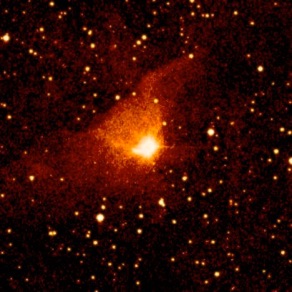
The accretion disk model for FU Ori objects proposed by Hartmann & Kenyon (1985, 1987a, 1987b) can explain the peculiarities enumerated above in a straightforward manner. Outbursts are known in other accreting disk systems and may be the result of a common mechanism (e.g., Bell & Lin 1994). The high temperature of the inner disk produces the observed F-G supergiant optical spectrum, while the cooler outer disk produces an infrared spectrum having the spectral type of a K-M supergiant. The Keplerian rotation of the disk can produce double-peaked line profiles as often observed, with peak separation decreasing with increasing wavelength of observations, since the inner hotter disk which produces the optical spectrum rotates faster than the outer cooler disk which produces the infrared spectrum.
1.1 Hot Inner disk:
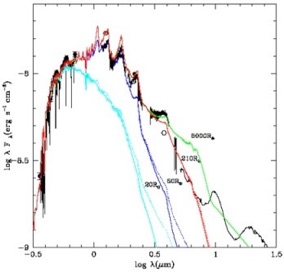
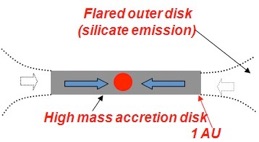
1.2 Evolutionary stages:
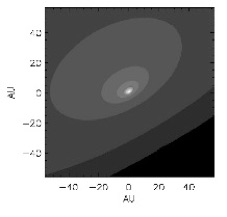
1.3 Disk Keplerian rotation:
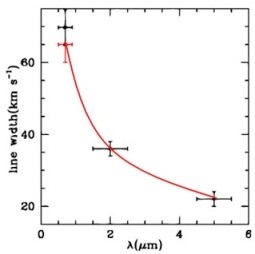
In Zhu et al. 2009a, we report a spectrum from the Phoenix instrument on Gemini South which shows that differential (slower) rotation continues to be observed out to ~ 5 micron. The observed spectrum is well matched by the prediction of our accretion disk model previously constructed to match the observed spectral energy distribution and the differential rotation at wavelengths < 2.2 micron. This kinematic result allows us to confirm our previous inference of a large outer radius (~1 AU) for the rapidly accreting region of the FU Ori disk, which presents difficulties for outburst models relying purely on thermal instability. While some optical spectra have been interpreted to pose problems for the disk interpretation of FU Ori, we show that the adjustment of the maximum effective temperature of the disk model, proposed in a previous paper, greatly reduces these difficulties.